

KEYNOTE TALK
Dwight Stoll, Gustavus Adolphus College, USA
Choosing a reversed-phase (RP) liquid chromatography column from the hundreds of options available from manufacturers can be challenging. On the one hand, it is great to have so many options to choose from, in terms of both stationary phase chemistries (C18, PFP, and so on) and physical characteristics (particle size, diameter, and so on). On the other hand, narrowing the number of options down to the point of choosing just one can be difficult. How do we choose? In this presentation, I will discuss the Hydrophobic Subtraction Model (HSM) of RP selectivity that can be used as a tool to guide this selection process. I will briefly review fundamental aspects of the model and the evolution of the free, public database of column characteristics over the past 20 years. Then, I will discuss how the HSM and database can be used to select columns with similar, slightly different, or very different selectivities. In the end, of course, candidate columns must be evaluated with actual samples, but the HSM database is a powerful resource for exploring potential candidates that can save time and money in the method development process.
Imad A. Haidar Ahmad (speaker) Gioacchino Luca Losacco, Rodell Barrientos, and Erik L. Regalado, Merck & Co. Inc, USA
Selection of column and mobile-phase chemistries is a crucial step in chromatographic method development. It is common nowadays to use sophisticated “screening systems” to evaluate several column and mobile phase chemistries early in the method development process. The introduction of new column technologies into these screening systems requires continuous performance monitoring to catch changes in selectivity over time. Consequently, developing a universal method that could be used across different column chemistries and the mobile-phase pH range in common use would be very useful. In this presentation, we introduce a single set of probe molecules that can be used for this purpose. The probe set and chromatographic conditions, which are useful for monitoring a wide range of column chemistries, temperatures, and pH conditions, were discovered via software-based retention. The approach has been applied to monitor the performance and stability of multiple columns using an automated ultrahigh-pressure liquid chromatography (UHPLC) screening system, thus illustrating its practicality and effectiveness.
Ken Broeckhoven, Vrije University of Brussels, Belgium
With the introduction of sub-2-µm (superficially) porous particles around 15 years ago, significant improvement in separation speed and resolution became possible. These small particles allowed the use of shorter columns and higher velocities and were often packed in smaller ID columns to avoid thermal effects (viscous heating), reduce solvent consumption, and improve compatibility with MS (lower flow rates). These high-performance small-volume columns, however, are very sensitive to dispersion occurring in the rest of the fluidic path of the instrument such as in the injector, mobile-phase preheater, connection tubing, and the detector cell or interface, such as with a mass spectrometer. It was therefore not possible to use these narrow-bore column on “standard” HPLC instrumentation, because they required the use of so-called ultrahigh-pressure (UHPLC) instruments that not only have a higher maximum operating pressure, but also have reduced extracolumn dispersion. After introducing the importance and consequences of extracolumn dispersion, this tutorial will highlight the different contributions to extracolumn broadening occurring in modern UHPLC instrumentation. Methodologies and the pro- and cons to estimate the amplitude of extracolumn dispersion will be critically reviewed and some easy hands-on tests to reduce and optimize your system configuration will be provided.
Davy Guillarme, University of Geneva, Switzerland
This presentation will highlight some challenges commonly observed when characterizing protein biopharmaceutical samples (such as monoclonal antibodies and related compounds) in non-denaturing liquid chromatography (LC) and how to mitigate them. The focus will be on two different LC modes, namely ion-exchange chromatography (IEX) and size-exclusion chromatography (SEC), which are widely used for charge variant and size variant separations. Helpful information will be shared during the talk to help achieve successful IEX and SEC separations.
With all the speakers in the session
Dawn Watson, CHROMacademy Technical Expert, Crawford Scientific
Let us walk you through a quick troubleshooting strategy for this all-too-common problem of extra peaks in HPLC. In just a few injections we can isolate the problem from a long list of possibilities to just a few, allowing you to quickly focus your troubleshooting efforts. For extra peaks coming from contamination, we will also discuss sources in the mobile phase, sample, HPLC hardware, and column to allow you to build in procedures to help avoid contamination and the occurrence of extra peaks. This session will include a 30-minute talk plus 15 minutes of audience questions.
Evan Walters, Market Segment Manager, Biotage AB
Extraction protocols and analytical methods utilized for detecting per- and polyfluoroalkyl substances (PFAS) in aqueous samples have evolved rapidly over the past decade. From 2013 to 2015, EPA 537 was utilized for assessment monitoring of PFAS as part of the Unregulated Contaminant Monitoring Rule (UCMR) 3 program and was updated to EPA method 537.1 shortly thereafter. In late 2019, EPA method 533 and International Organization for Standardization (ISO) Method 21675 were released, which in addition to EPA method 537.1, enable laboratories to quantify up to 37 PFAS analytes with exceptional precision and accuracy. To better improve our understanding of method performance, it is beneficial to review these top methods utilized for evaluating PFAS in aqueous samples. This evaluation demonstrates the value obtained from comparing protocols and analytical results using current methodology for PFAS monitoring.
Jeremy Smith, Applications Chemist, Biotage, AB
Traditional analytical workflows often involve sample preparation techniques requiring the use of large volumes of raw samples and organic solvents. The goal is to drive up recovery and sensitivity as it pertains to obtaining low levels of analyte detection. Modern solid-phase extraction (SPE) technology has emerged to minimize sample and solvent consumption, while providing analytical sensitivity that is comparable to traditional workflows. The Biotage MIKRO plate incorporates a common 96-well plate format for high-throughput analysis and a robust, loosely packed 2 mg polymeric sorbent for the extraction of a variety of analytes. Presented here is a brief overview of common but essential workflows in a microelution format, fully automated on the Biotage Extrahera LV-200 sample preparation instrument. Workflows are simple, cost effective, and include discussions of drugs of abuse, steroids, catecholamines, and metanephrines.
Alicia D. Stell, PhD, Product Manager, Organic Solutions Division, CEM Corporations & Lucidity Systems
Industrial, academic, and startup labs often outsource analysis of their samples because the cost of analytical systems can be too much. This cost, coupled with the space requirements and the expertise necessary to run the systems, are major hurdles to in-sourcing testing. CEM | Lucidity is dedicated to making critical analytical testing available to labs everywhere. The miniLC brings a small footprint, ease of use, and affordability to labs everywhere, all while maintaining analytical results comparable to those of larger and more expensive systems. This talk will feature analysis of cannabis products, though the applications of the miniLC span beyond that industry.
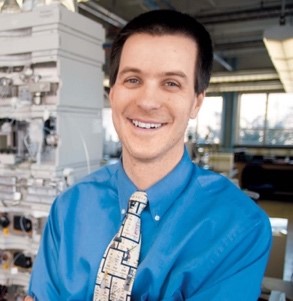
Professor of Chemistry, Gustavus Adolphus College
Our LC session chair and keynote speaker Dwight R. Stoll is a professor of chemistry at Gustavus Adolphus College in St. Peter, Minnesota. He received his PhD from the University of Minnesota, under Professor Peter Carr, working on the development of fast, comprehensive two-dimensional liquid chromatography (2D-LC). Stoll’s current primary research focus is on the development of 2D-LC for both targeted and untargeted analyses. Active research projects in his laboratory touch on most aspects of multidimensional separation methodologies, including optimization strategies, characterization of selectivity in reversed-phase LC, instrument development, and applications in biopharmaceutical analysis. Stoll is the author or co-author of more than 75 peer-reviewed publications and four book chapters, is a named co-inventor on several granted patents, and has instructed numerous short courses in 2D-LC. In 2011 he was the recipient of LCGC’s Emerging Leader in Chromatography Award. In 2017 he received the Georges Guiochon Faculty Fellowship, and was recognized with an Agilent Technologies Thought Leader Award, which has supported research in his laboratory on the development of 2D-LC methodologies for biopharmaceutical analysis. He is also a member of LCGC’s editorial advisory board and is the editor of the “LC Troubleshooting” column in LCGC.
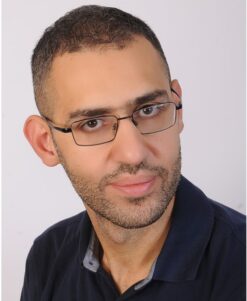
Associate Principal Scientist, Analytical Enabling Technologies, Merck & Co. Inc
Imad A. Haidar Ahmad received his PhD from Florida State University under the mentorship of Dr. André Striegel. He completed his postdoctoral research with Prof. Peter Carr at University of Minnesota. He is currently an Associate Principal Scientist and supervisor in the Analytical Chemistry Enabling Technology group within the Analytical R&D department at Merck Research Laboratories (MRL)
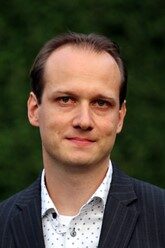
Associate Professor, Department of Chemical Engineering, Vrije Universiteit Brussel (VUB)
Ken Broeckhoven has a Masters degree and PhD in chemical engineering from the Vrije Universiteit Brussel (VUB), in Brussels, Belgium, where he currently is an associate professor in chemical engineering and bio-engineering sciences. He is also the head of the Department of Chemical Engineering at the VUB. His research mainly focuses on fundamental aspects of chromatographic separation methods (diffusion, mass transfer, eddy-dispersion, extracolumn band broadening, kinetic performance), in both liquid and supercritical fluid chromatography. In 2019, he received the LCGC Emerging Leader in Chromatography Award. He is a part of the organizing and scientific committee of the HTC conference series, a biennial conference in Ghent, Belgium, that focuses on hyphenated techniques in chromatography.
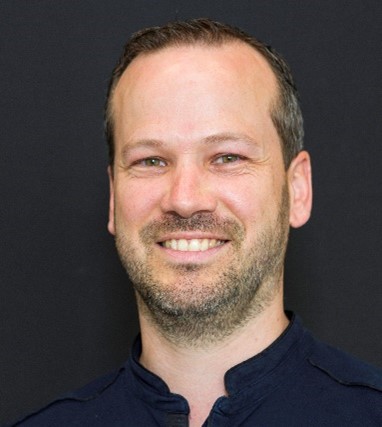
Senior Lecturer and Research Associate, University of Geneva
Davy Guillarme holds a PhD in analytical chemistry from the University of Lyon, France. He is now a senior lecturer and research associate at the University of Geneva in Switzerland. He has authored more than 300 journal articles related to pharmaceutical analysis. His expertise includes HPLC, UHPLC, HILIC, LC–MS, SFC, SFC–MS, multidimensional LC, and the analysis of proteins, mAbs and ADCs. He is an associate editor of the Journal of chromatography B. He was the recipient of the LCGC emerging leader award in chromatography in 2013 and the jubilee medal from the chromatographic society in 2018. He was also elected as one of the world's most influential analytical scientists in 2013, 2014, 2015, 2017, 2019, 2020 and 2021.
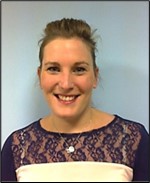
CHROMacademy Technical Expert, Crawford Scientific
Dawn Watson completed her PhD in synthetic inorganic chemistry at the University of Strathclyde, in Glasgow, followed by postdoctoral research on small-molecule reaction kinetics at Princeton University. Following several years working for a major instrument manufacturer, she became a technical expert for CHROMacademy in 2013. She has expertise in various analytical techniques, including HPLC, GC, GC–MS, LC–MS, NMR, and molecular spectroscopy, as well as numerous wet chemistry and sample preparation techniques.
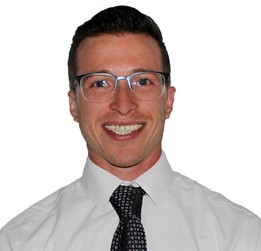
Market Segment Manager, Biotage AB
Evan Walters is a Regional Market Segment Manager for Biotage and has been with the company for 4 years. He develops and executes strategies to support analytical chemistry workflows in Environmental, Food and Agriculture market segments. He has held previous roles as an environmental chemist, geochemist, and technical sales representative. Evan utilizes his background in analytical chemistry to connect laboratories with products and workflow solutions that will ensure their success. Walters received a Master of Science in Geochemistry from Southern Illinois University.
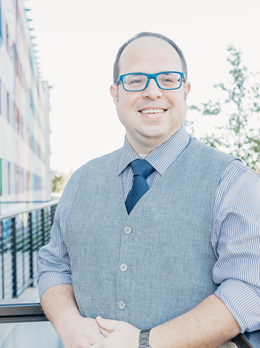
Applications Chemist, Biotage, AB
Jeremy Smith is an Applications Chemist supporting the Analytical Life Sciences markets at Biotage. He holds a Bachelor’s degree in Biology from the University of Kentucky, and is currently pursuing a Master’s Degree in Pharmaceutical Science with a concentration in Clinical Toxicology from the University of Florida. His experience spans 14 years, largely involved with method development in the areas of clinical and forensic toxicology between Laboratory Corporation of America and Ameritox. He has been employed by Biotage for 4 years.
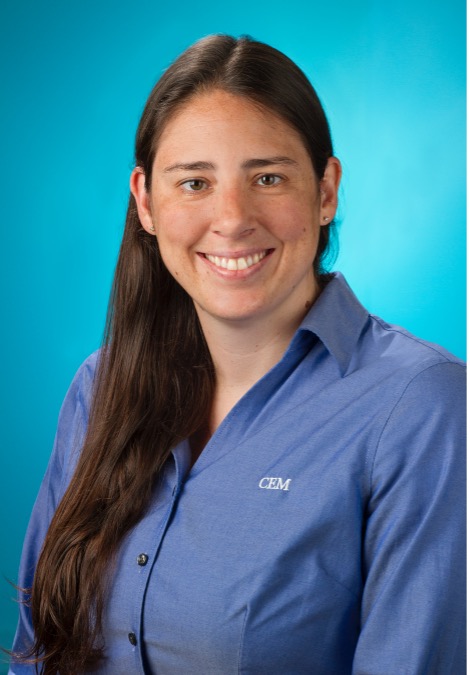
Product Manager, Organic Solutions Division, CEM Corporations & Lucidity Systems
Dr. Alicia Douglas Stell has worked with CEM for the past 14 years, joining after completing her PhD in Analytical Chemistry. Her extensive background in chromatographic analysis and her mechanical expertise have been instrumental in the development of novel systems for sample preparation and analysis. She has traveled the world to present on these novel systems and to identify new markets for this innovative technology.